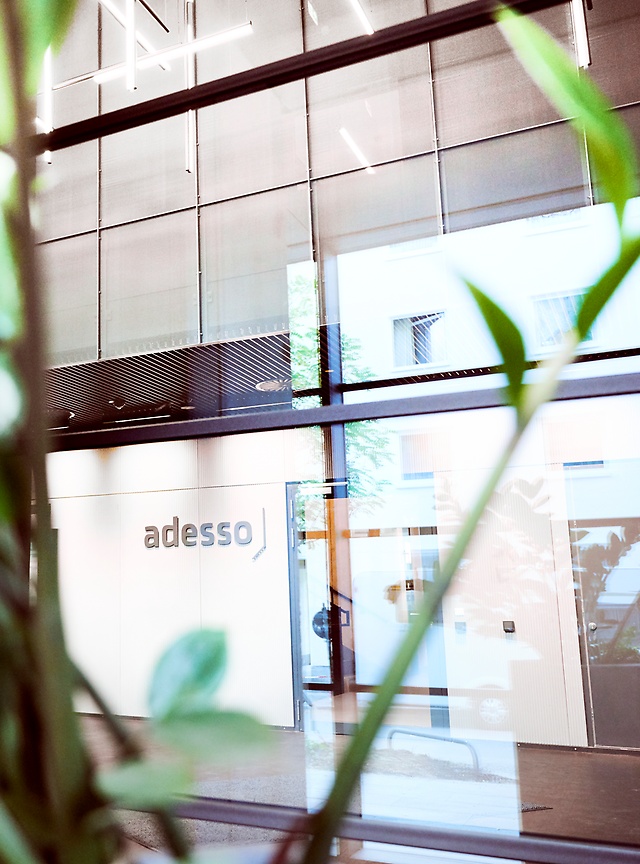20. January 2023 By Zoe Holdt, Ellen Szczepaniak and Simon Bächle
APV – the best of both worlds
As the energy transition continues to progress, a new challenge has emerged: the decision as to how to use land. This is because in a country such as Germany, which has a limited amount of open areas of land and a high population density, the decision has to be made as to whether an area of land should be used for energy production or for agriculture. This conflict of interest is becoming increasingly acute, as for farmers, using the open land to construct a photovoltaic module offers significantly higher yields – and at less expense – than using it for agriculture.
For several decades now, research has been conducted around the world into a solution that is generally known as agrophotovoltaics (or APV for short). APV, as the name suggests, represented a technology in which photovoltaic modules are installed on agricultural land. This combination enables electricity to be generated while still simultaneously using the land for agricultural purposes, making the use of it more efficient.
How does APV work?
There is a wide variety of designs and concepts in APV technology, and different forms are suitable for different applications depending on the location, crop or even soil conditions. All of them feature a structure that houses PV modules being built on land that was originally agricultural, either in an open or a closed system. With open constructions, the PV modules can be installed either high above the crops or, in order to save space, between them. Some can also be aligned according to the position of the sun. Closed systems can be integrated into greenhouse roofs and are usually fixed in place – in other words, they have no tracking mechanism.
The most common form of APV systems are modules that are erected on stilts above a field. This allows the field to be used to grow fruit, cereals or vegetables without having to worry about the height of the structure restricting the use of the agricultural machinery. The width of the stilts can be adapted to the needs of the individual farmers.
The biggest difference between modules in APV systems and traditional PV modules, such as the ones installed on your neighbour’s roof, is that APV systems use bifacial modules. This means that the solar cells are able to absorb light (photons) on both sides, enabling these modules to use both direct sunlight and reflected light from the field or the crops.
What are the advantages and disadvantages of APV systems?
The current disadvantages of using APV systems are the higher costs incurred compared to ground-mounted PV systems. The reason for this is two-fold: not only do the stilts required create additional costs, but erecting the construction that holds the APV modules is more complex and therefore more expensive. In addition, the bifacial modules cost (even) more money. This may change in the future given the increasing spread of APV systems and the economies of scale they bring with them.
The amount of time needed to clean the modules in an APV system can also lead to costs rising. In Germany, the modules do not need to be cleaned for the most part, since the country sees enough rainfall to clean dust and dirt off of the panels. Additional cleaning may be necessary in other parts of the world, which can be costly due to the height of the construction. A major disadvantage for APV was that EU agricultural subsidies were only paid to farmers who used their fields primarily for agricultural purposes. If the fields were also used for APV, then the farmers stopped receiving the subsidies, meaning there was little incentive for them to go down this route. This problem will be solved by the new German Renewable Energy Sources Act 2023 (Erneuerbare-Energien-Gesetz, EEG 2023), which will enable farmers to receive European agricultural subsidies for land with APV systems. The key criterion that decides whether they receive the subsidies is that at least 85 per cent of the original agricultural land can be used despite the PV systems.
Furthermore, the shadow cast by the modules can hinder crop growth and lower yields by up to 20 per cent. In this case, planting shade-loving crops (such as spinach, white cabbage or beetroot) in fields that also house APV systems is the most logical solution, as this type of crop is less sensitive to receiving less sunlight. In contrast, full-sun crops (such as thyme) need intense sunlight to grow. This is also evidence that a disadvantage can become an advantage, as the crops will benefit from the protection against the intense sunlight during the summer months when the temperatures are higher and the amount of rainfall is lower, meaning they will likely produce an even higher yield.
APV systems are designed in a way similar to that of roofs, which in turn offers a number of advantages:
- The water evaporating from the crops cools the photovoltaic modules from below. This effect has a direct impact on the efficiency of PV modules. This is because once the temperature reaches 25 degrees Celsius, their efficiency drops by 0.35 to 0.45 per cent for every increase by one degree Celsius.
- Another effect the design has is the positive impact on the water supply to the crops. The canopy allows the rainfall to be distributed and protects the crops.
- The influence that snow and hail have on crops – which is a source of major concern for fruit growers in particular – can also be reduced. At present, many farmers protect their fruit trees from hail using nets made of plastic. APV systems could reduce the number of nets and film used.
- The crops can be protected from getting scorched by the sun and drying out on particularly hot summer days by using targeted shading.
- For farmers, it is hoped that the targeted use of APV systems will lead to a reduction in pesticides and the possibility of generating additional income through the sale of electricity from APV systems.
What is the potential for APV systems?
In the future, APV systems will have to play a leading role because at the current PV expansion rates (72 gigawatts (GW) in 2022), Germany will not reach its target of 400 GW capacity from PV systems for 2040. According to current calculations, this would require an annual expansion rate of around 22 GW. According to studies by Fraunhofer ISE, APV systems in Germany have the potential to generate 1,700 GW, which would meet the expansion target several times over.
It would therefore make sense to create some of the PV capacity needed by using APV systems and to use solar energy to de-escalate the conflict over land consumption.
The constant rise in global warming might also make the use of APV systems a necessity in arid regions – such as in deserts or extremely dry zones – in particular, in order to be able to continue farming with the scarce water supplies and intense amount of sunlight. The world’s largest APV system, which boasts a capacity of 700 megawatts, is currently being built in the Gobi Desert (China).
The current LCOE for APV is between 4 and 11 cents/kilowatt hour, depending on the type, and 8.15 cents/kilowatt hour on average. This means they are still twice as expensive as ground-mounted PV systems. However, this difference is expected to decrease in the future. APV is already winning in the cost comparison with small rooftop systems.
Farmers have a number of options available to them to use APV systems. These include using the electricity for themselves, leasing the land or selling the electricity directly. A new type of virtual power plant is being developed as part of the VideKIS research project that enables the electricity produced using renewable energy – such as that generated by APV systems – to be offered on the electricity market and even on the primary control reserve market. In doing so, the virtual power plant relieves farmers of administrative duties and markets the APV system in a way that maximises profits.
You will find more exciting topics from the adesso world in our latest blog posts.



